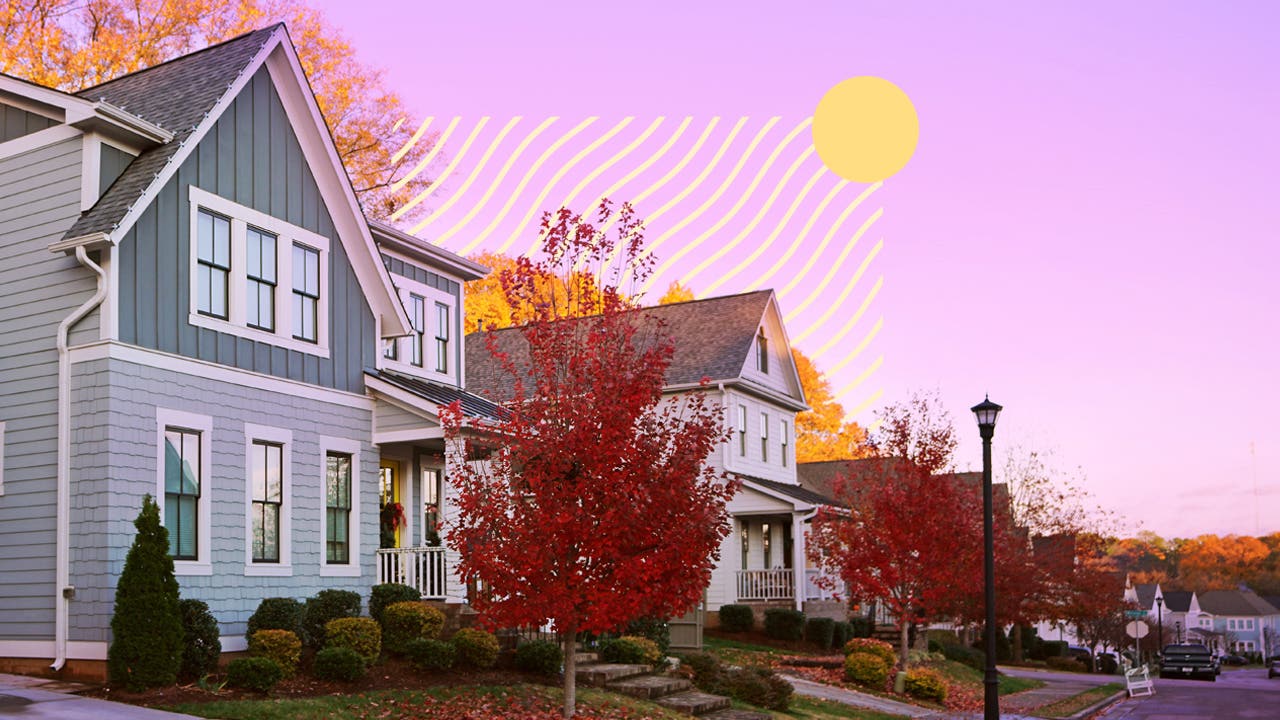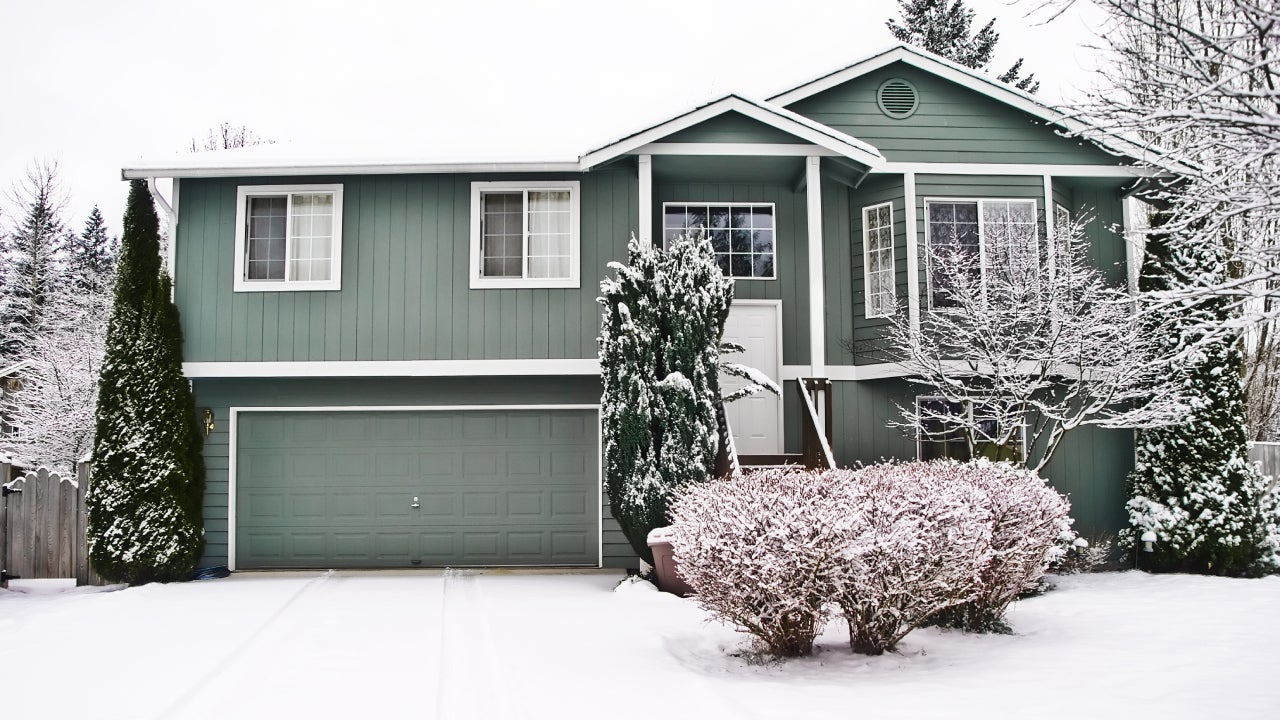America’s best places to live in 2023

Packing up and moving, though, requires knowing where you want to go next. It’s a tough question to answer, given the pandemic-fueled housing market madness of the past couple years. Whether you’re moving for a job, for personal reasons or with the newfound freedom of working remotely, where can you live your best life?
To help focus your search on cities where your money will stretch furthest and your lifestyle will be most enjoyable, Bankrate analyzed metro areas across the country. Our proprietary scoring model aggregated data based on five key categories: well-being, affordability, job market, diversity and migration. Based on our assessment, here are the 10 best places to live in the U.S. right now.
1. Round Rock, TX
Plenty of people had their sights set on Austin, Texas, in 2022 — in fact, it was the second-fastest-growing city in America. This year, why not shift your target just 15 miles north to Round Rock, where you’ll have easy access to the best of Austin without its overheated, super-competitive real estate market. Round Rock isn’t simply a suburb, it’s a tech hub: Dell Technologies is headquartered here, and companies like Switch and Emerson also call it home. Plus, 80 percent of Round Rock residents live within a 10-minute walk of a public park.
- Median home sale price: $495,000
- Cost of living: 91.5 (national average is 100)
- Average salary: $64,913
- Unemployment rate: 2.5%
- Total employees year-over-year: +8.6%
- Well-being: 67.0 out of 100
- Diversity: 65.9 out of 100
- Net migration: +1.8% population increase year-over-year
Why it stands out: It may still be fairly expensive to buy a home here, but you’ll save on just about everything else in Round Rock (especially when compared with Austin proper). The city’s cost of living comes in significantly lower than the national average, proving that not everything is bigger in Texas. Buying a home here now is likely to pay off in the future, too: Round Rock’s population is projected to grow by nearly 75,000 people by 2040 — quite the jump from the 119,000 people who lived here in 2020.
2. Sarasota, FL
The second-best place to live in the country also earned the top ranking in Bankrate’s list of Best Places to Live in Florida. Sarasota offers a bit of everything: cultural activities like the ballet and an annual film festival, exclusive golf courses, nightlife and of course, Gulf Coast beachfront beauty. And while Sarasota is a particularly good spot if you’re thinking about retirement, it’s also attractive for young families looking for a safe and relaxing place to plant their roots.
- Median home sale price: $435,000
- Cost of living: 106.7 (national average is 100)
- Average salary: $61,988
- Unemployment rate: 2.2%
- Total employees year-over-year: +7.8%
- Well-being: 67.2 out of 100
- Diversity: 42.7 out of 100
- Net migration: +3.5% population increase year-over-year
Why it stands out: With a 3.5 percent net migration increase, Sarasota’s population has surged more than any other city on our list, and the nearly 8 percent increase in employees proves that the city isn’t just a destination for retirees. While the cost of living here is slightly above the national average, you get a lot for your money — especially considering that you get to live in a beachfront vacation destination full time.
3. Tacoma, WA
If you’re hoping to chase career opportunities with big-name employers like Microsoft, Amazon and Boeing, don’t bother with the super-spendy prices in Seattle. Instead, follow the Puget Sound 30 miles south to Tacoma, where the cost of living is around 20 percent cheaper. You’ll be even closer to some of the best hiking in the Pacific Northwest around Mt. Rainier. And Tacoma can go toe-to-toe with Seattle when it comes to culture, too, thanks to a bustling museum district, an impressive cast of craft breweries and a packed calendar of waterfront festivals and fun.
- Median home sale price: $479,515
- Cost of living: 107.4 (national average is 100)
- Average salary: $80,420
- Unemployment rate: 2.6%
- Total employees year-over-year: +5.5%
- Well-being: 67.9 out of 100
- Diversity: 64.8 out of 100
- Net migration: -0.6% population increase year-over-year
Why it stands out: Tacoma offers a high earning potential — it boasts one of the higher average salaries on our list, with total employees on the increase — combined with a relatively low cost of living. Plus, the housing market is cooling here: Redfin data shows a notable decrease in median home prices over the past year, along with an uptick in price cuts.
4. Bridgeport, CT
If the lifestyle in New York City and its closest suburbs is too rich for your blood, take a look at Bridgeport. With commuter-train service to Grand Central Terminal every half-hour, you can enjoy convenient access to Manhattan without the financial stress. While it is certainly a quieter pace of life, this port city — the most populous in Connecticut — still offers plenty to do. Cheer on the city’s minor league hockey team, go zip-lining and climbing at the Discovery Adventure Park or simply relax with a scenic view of the Long Island Sound.
- Median home sale price: $315,000
- Cost of living: 120.1 (national average is 100)
- Average salary: $120,244
- Unemployment rate: 4.4%
- Total employees year-over-year: +4.6%
- Well-being: 67.7 out of 100
- Diversity: 62.5 out of 100
- Net migration: +0.3% population increase year-over-year
Why it stands out: In a time when buying a home feels out of reach for many Americans, Bridgeport is a welcome exception, with the lowest median home price on our list by far. The cost of living here is well above the national average — it is the New York metro area, after all — but the sizable average salary goes a long way in canceling out that concern. And its well-being score of 67.7 puts it right on par with the top three cities on our list.
5. Raleigh, NC
Bankrate’s best place to live in North Carolina is also one of the best places to live in the entire country. As one of the three corners of the state’s famed Research Triangle, Raleigh has made a name for itself as an East Coast center of innovation, and there are plans for a billion-dollar Apple campus coming soon. Even if you aren’t chasing career ambitions in the tech or research sector, this state capital is equally appealing due to a mild year-round climate, a blossoming foodie scene and plenty of opportunities to cheer for the hometown NC State Wolfpack.
- Median home sale price: $432,430
- Cost of living: 94.7 (national average is 100)
- Average salary: $60,884
- Unemployment rate: 3.3%
- Total employees year-over-year: +5.7%
- Well-being: 67.0 out of 100
- Diversity: 62.1 out of 100
- Net migration: +1.6% population increase year-over-year
Why it stands out: Inflation has made life harder all around the country, but Raleigh manages to deliver a cost of living below the national average. The city has earned nods as “the next Silicon Valley,” and its lower bills make it a much more affordable option than the Bay Area: Bankrate’s cost of living calculator shows that Raleigh is around 50 percent more affordable than San Francisco, with much, much lower housing prices.
6. Arlington, TX
You may have heard the abbreviation DFW to describe the sprawling Dallas–Fort Worth metro area, but there’s a silent A missing from that acronym: Arlington. This town, about halfway between the two larger cities, is heaven for pro-sports fans as home to both baseball’s Texas Rangers and football’s Dallas Cowboys. Living here also puts you on the doorstep of major companies such as AT&T, Southwest Airlines and Kimberly-Clark, and when you’re not working you can fill your calendar with events like the city’s All-Star Craft Beer, Wine and Cocktail Festival, the South Street Art Festival and free concerts at the Levitt Pavilion.
- Median home sale price: $353,000
- Cost of living: 92.1 (national average is 100)
- Average salary: $61,554
- Unemployment rate: 3.3%
- Total employees year-over-year: +7.3%
- Well-being: 66.3 out of 100
- Diversity: 73.4 out of 100
- Net migration: +0.8% population increase year-over-year
Why it stands out: The median home price and low cost of living cement Arlington as a place where the concept of affordability is still alive and well — especially rare so close to a big city like Dallas. This is also one of the most diverse destinations on our list, offering opportunities to meet new people from new backgrounds and expand your outlook.
7. Fort Myers, FL
If you like the Gulf Coast of Florida but Sarasota (number two on our list) feels a bit pricey for your budget, median home prices are more affordable farther south in Fort Myers. In fact, this is one of the fastest-growing cities in the entire country, according to figures from the Census Bureau. That influx of newcomers isn’t just retirees chasing the sun, either: Fort Myers’s population is younger than Sarasota’s, with a median age of about 41 years old.
- Median home sale price: $389,000
- Cost of living: 105.7 (national average is 100)
- Average salary: $54,707
- Unemployment rate: 2.4%
- Total employees year-over-year: +5.3%
- Well-being: 66.5 out of 100
- Diversity: 51.7 out of 100
- Net migration: +3.4% population increase year-over-year
Why it stands out: Fort Myers is proof that waterfront life doesn’t have to break your budget. Plus, the increase in new employees and net migration are reflections of the fact that this city is more than just a vacation destination. If working remotely from the beach sounds appealing to you, Fort Myers is definitely worth checking out.
8. Oakland, CA
Throughout the pandemic, the Bay Area has made headlines for the number of people opting to move elsewhere. But Oakland remains a place of relative opportunity. It’s cheaper than San Francisco overall, for one thing, and it has its own creative spirit with Michelin-rated dining destinations, more than 50 art galleries and a variety of wineries that will give you reasons to say “cheers” without driving to Napa. Buying a home is very pricey here compared to most of the country, but your investment is likely to pay off in a big way down the road: A forecast from RenoFi estimates that property values in Oakland could be the third-highest in the country by 2030.
- Median home sale price: $920,000
- Cost of living: 152.5 (national average is 100)
- Average salary: $111,050
- Unemployment rate: 3.9%
- Total employees year-over-year: +5.9%
- Well-being: 68.8 out of 100
- Diversity: 77.3 out of 100
- Net migration: -2.7% population increase year-over-year
Why it stands out: Yes, it’s expensive to live in Oakland. But you get what you pay for, and the opportunities for both work and play here are off the charts. Its well-being score of 68.8 is the highest on our list, and so is its diversity score of 77.3. When you’re enjoying life with different voices from different backgrounds, you’re going to develop a deeper appreciation for the whole world.
9. Alexandria, VA
Work in Washington, D.C., live and play in Alexandria. Located just across the Potomac River from the nation’s capital, Alexandria offers extraordinary access to the outdoors: An amazing 96 percent of residents are within a 10-minute walk to a public park. D.C.’s world-famous museums are just a Metro ride away, and if you prefer getting around on two wheels, Alexandria boasts a 52-mile network of bike lanes and trails. Plus, with 22 Fortune 1,000 companies, the northern Virginia region has plenty of employment opportunities.
- Median home sale price: $575,000
- Cost of living: 142.2 (national average is 100)
- Average salary: $76,771
- Unemployment rate: 3.3%
- Total employees year-over-year: +3.8%
- Well-being: 68.0 out of 100
- Diversity: 73.8 out of 100
- Net migration: -0.9% population increase year-over-year
Why it stands out: While the cost of living creates some headaches, Alexandria delivers when it comes to both well-being and diversity, with its scores in both categories the second-best on our list. (Only Oakland ranks higher in both arenas.) You might even be able to ditch the costs of a car here, too, thanks to walkable neighborhoods and cheap, convenient public transportation service to and from D.C.
10. Port St. Lucie, FL
The Sunshine State shines on our list with a third city in our top 10. Located on the other side of the state from Sarasota and Fort Myers, Port St. Lucie offers 20,000 acres of nature preserves and 21 miles of beaches along the Atlantic Ocean — the majority of which are public and free. When you aren’t fishing, snorkeling or sunbathing, the city has loads of non-water-related activities to enjoy. The New York Mets’ spring training is based here, and during the summer, the team’s minor league franchise keeps swinging for the fences, making life in Port St. Lucie feel like a home run any time of year.
- Median home sale price: $390,000
- Cost of living: 100.5 (national average is 100)
- Average salary: $58,649
- Unemployment rate: 2.8%
- Total employees year-over-year: +3.3%
- Well-being: 66.2 out of 100
- Diversity: 55.9 out of 100
- Net migration: +3.3% population increase year-over-year
Why it stands out: Port St. Lucie’s cost of living is almost exactly even with the national average, but the relatively low median home price and unemployment rate help it feel even more affordable. You can have a high quality of life here for a fairly basic budget.
Methodology
Choosing the best place to live is a very personal decision: It all depends on you and your individual circumstances. To help you decide, we’ve utilized data across five important categories to determine the Bankrate Best Places to Live lists: well-being, job markets, affordability, migration and diversity.
We sourced data from several trusted sources, including Sharecare, the U.S. Bureau of Labor Statistics, the Council for Community and Economic Research and the U.S. Census Bureau.
Below, find the formula that we utilized to calculate the weighted sum score for each city:
Weighted sum score = (Well-being * 0.30) + (Unemployment rate * -0.20) + (Total employees year-over-year * 0.05) + (Cost of living * -0.10) + (Average income * 0.05) + (Median home sale price * -0.05) + (Net migration * 0.15) + (Diversity * 0.10)
For more information about our data sources, what the individual data points mean, how they are weighted and more, visit the full Bankrate Best Places to Live Methodology.






